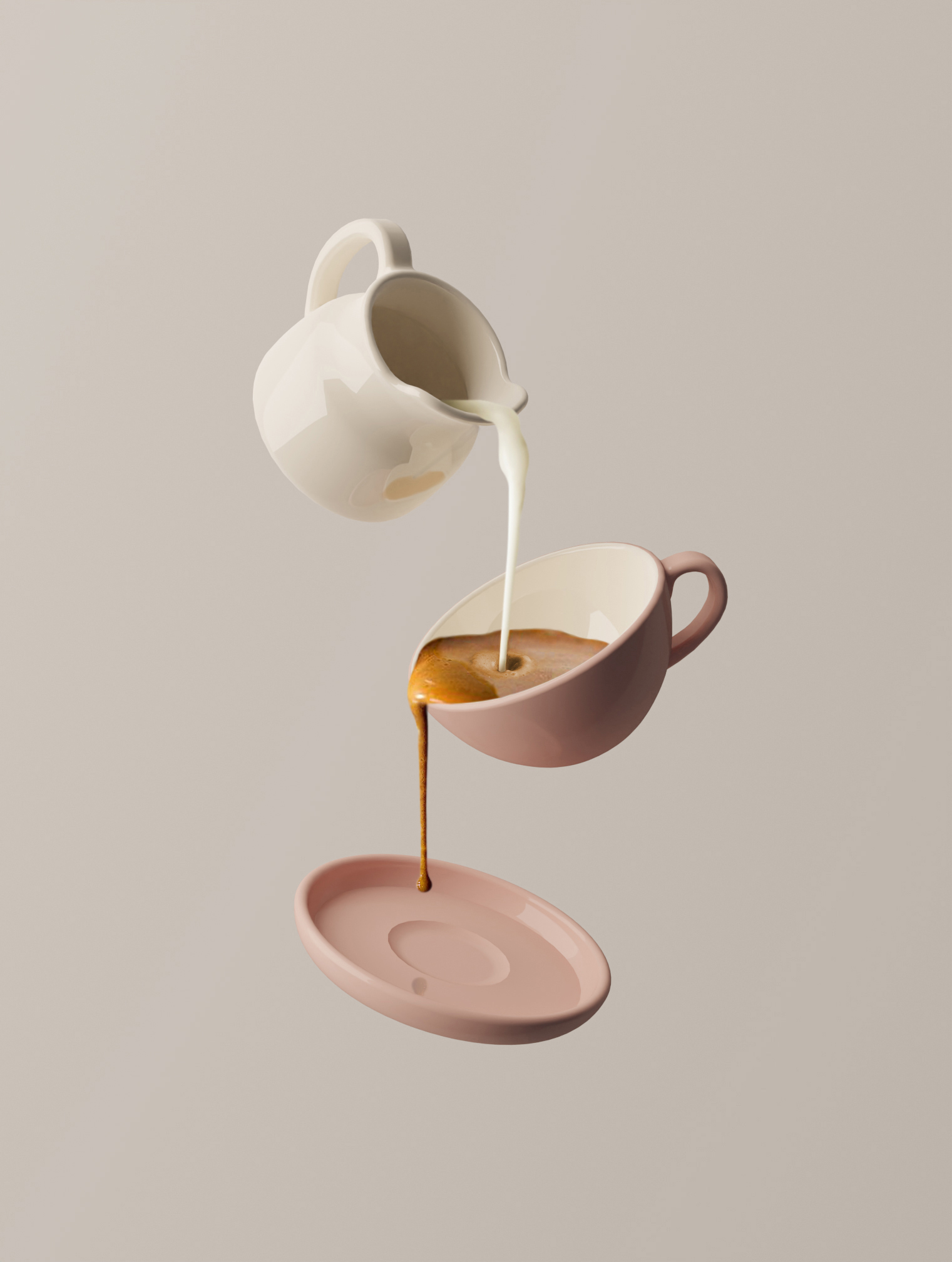Team enthucutlet breaks down the design of coffee cups and what it means to have a multi-sensorial coffee drinking experience with Aditi Chaddha, founder and creative director of Indus People.
In India now, we produce coffee, roast it to precision, and hone our preferences from pourovers to cortados. While coffee brewing and drinking has become increasingly detailed and meticulous, scant attention is paid to the coffee cups we drink from. Why is the espresso cup so tiny? Why are tulip cups best suited for cappuccinos and lattes? How does the density of the cup matter?
The drinking experience is a multisensorial one – the drink, the vessel, and the environment in which the drink is being consumed matters. Research indicates that the design of a cup can transform the way we experience a drink. Coffee houses and baristas are becoming increasingly more conscious about matching cups to brews. A cup’s structure, its material, the headspace (from the rim to the meniscus), its tilt angle, and the quantity of the coffee it holds – all help in amplifying the aroma and the taste of the drink. Don’t believe us? Here’s a study about how round shapes increase the perceived sweetness of the drink, whereas angular shapes increase its perceived bitterness.
To get to the bottom of this (and our coffee cups), we spoke with Aditi, the founder and creative director of Indus People, a brand that excels in the ceramic space. They have worked with various restaurants and cafés across India catering them with modern and minimal tableware.
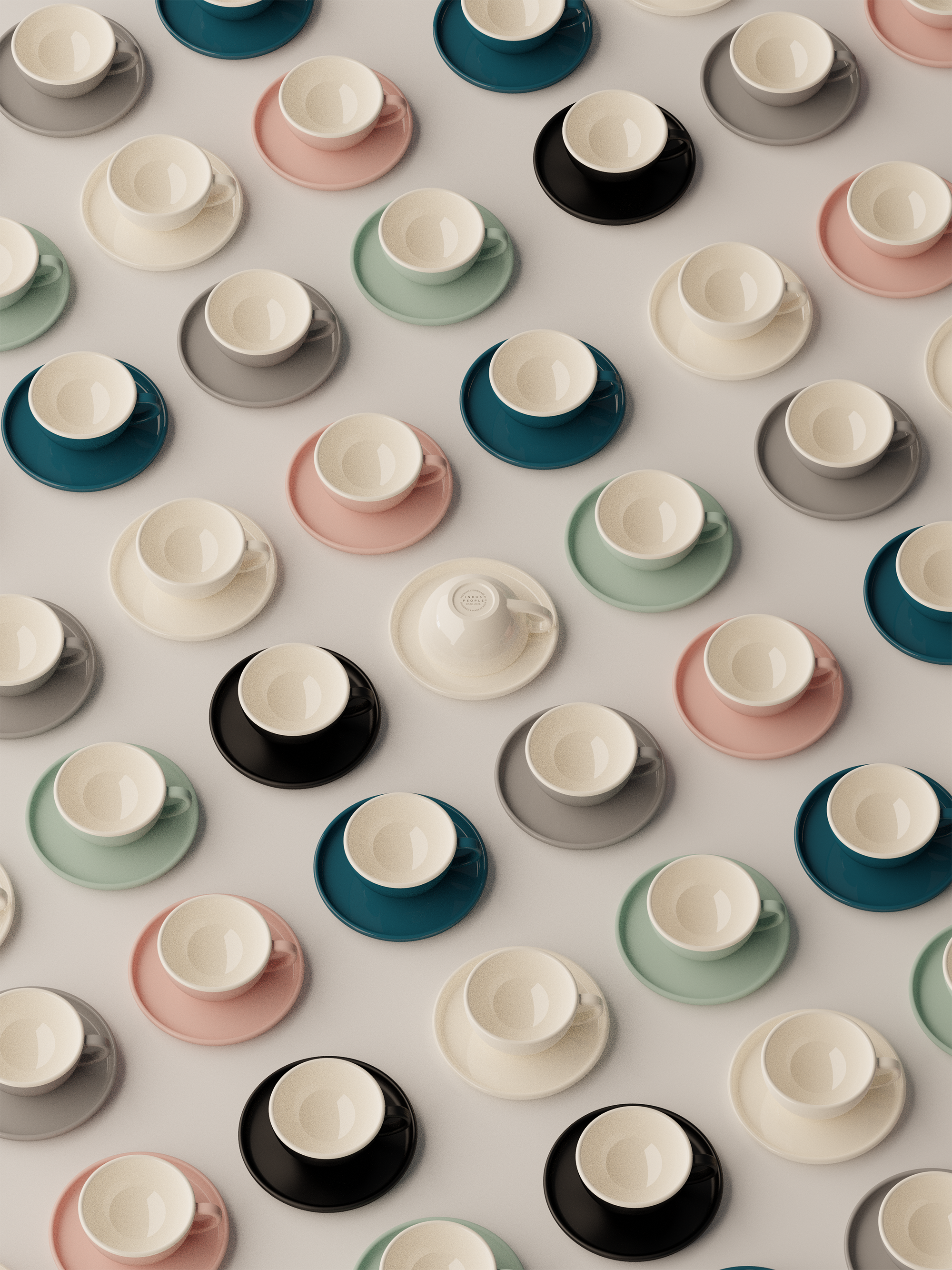
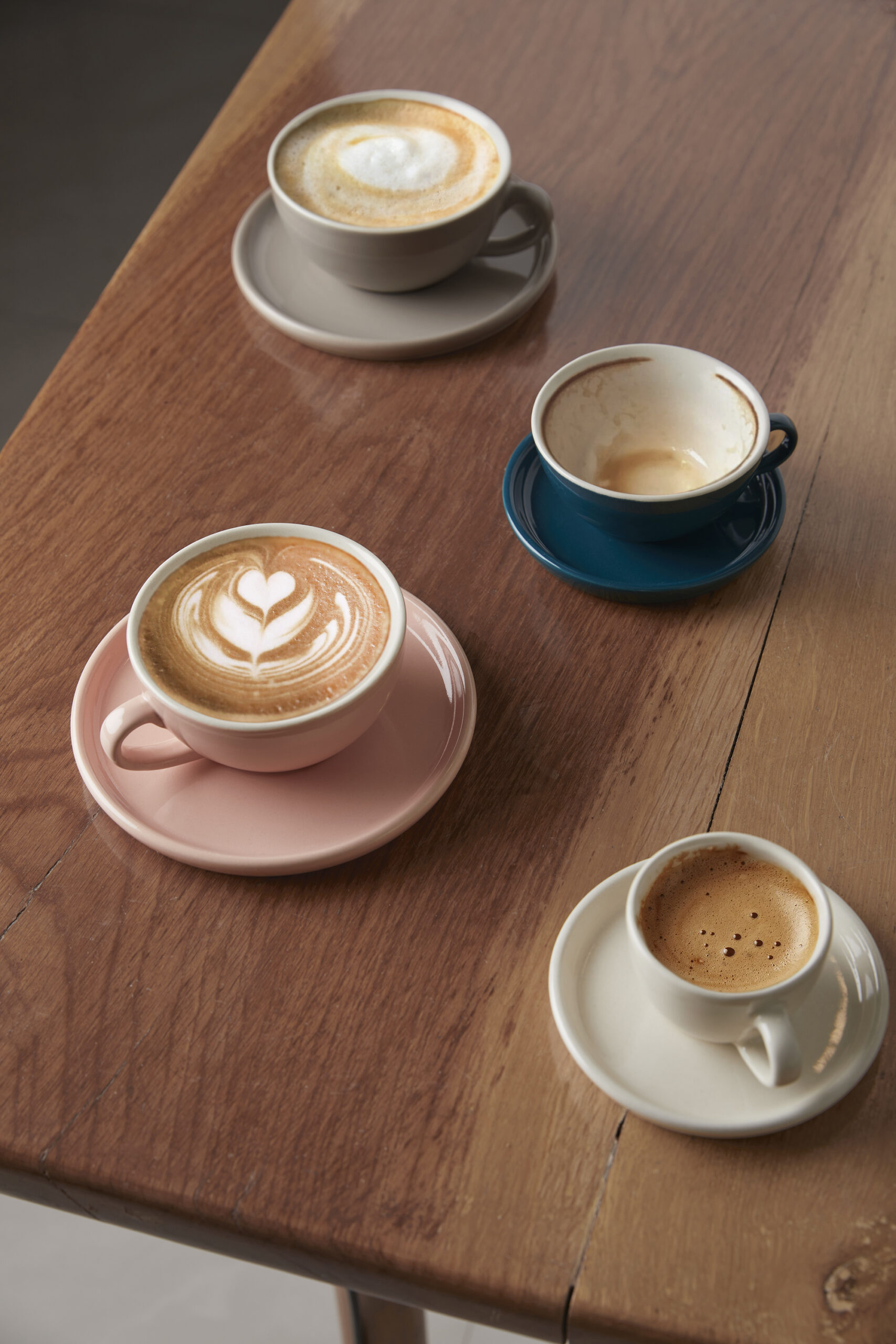

In the midst of dropping Indus People’s café range and being a busy mother, Aditi spills info on how the design of a coffee cup changes the way your beverage tastes. More than the actual taste, it’s the perceived taste that makes the difference. “The same coffee poured in different cups of different materials or different shapes can be perceived to taste differently”, says Aditi. The multisensory assimilation comes into effect; the aroma, the feel of the vessel in your hands, the way it is presented, the environ, and finally, the taste. All senses are involved in deciphering the taste of your coffee.
How can we become more aware of this as coffee drinkers? What should we take into consideration to get a fuller flavour from already brewed coffee?
Cupping Cupping: What The Palate Perceives
1. Material of the cup:
The same coffee can taste different in a ceramic cup and a takeaway cup. The different materials – ceramic, paper, glass, stainless steel – are all common, but Aditi believes that a ceramic cup is most ideal; it insulates hot liquids, and neither absorbs nor imparts flavours. Paper and plastic cups tend to absorb flavours and odours over time whereas glass cups have low heat retention. Similarly, stainless steel alters flavours.
2. Design of the cup:
The shape of the cup is determined by what one is trying to achieve from the coffee experience. Aditi lists a few examples: shorter cups generally draw out a stronger flavour while narrower and tulip-shaped cups allow you to tilt the cup providing more aroma. Cups with wider surface areas also increase the perception of sweeter flavours.
3. Colour of the cup:
The colour of the cup matters – the general perception is that the browner the coffee, the stronger it is. But, this is not true, Aditi says. Compared to coloured and transparent cups, coffee in white cups appear darker due to the stark contrast between brown and white. This makes you see the actual colour of coffee; this is also a reason why brands making professional cups keep their interiors white.
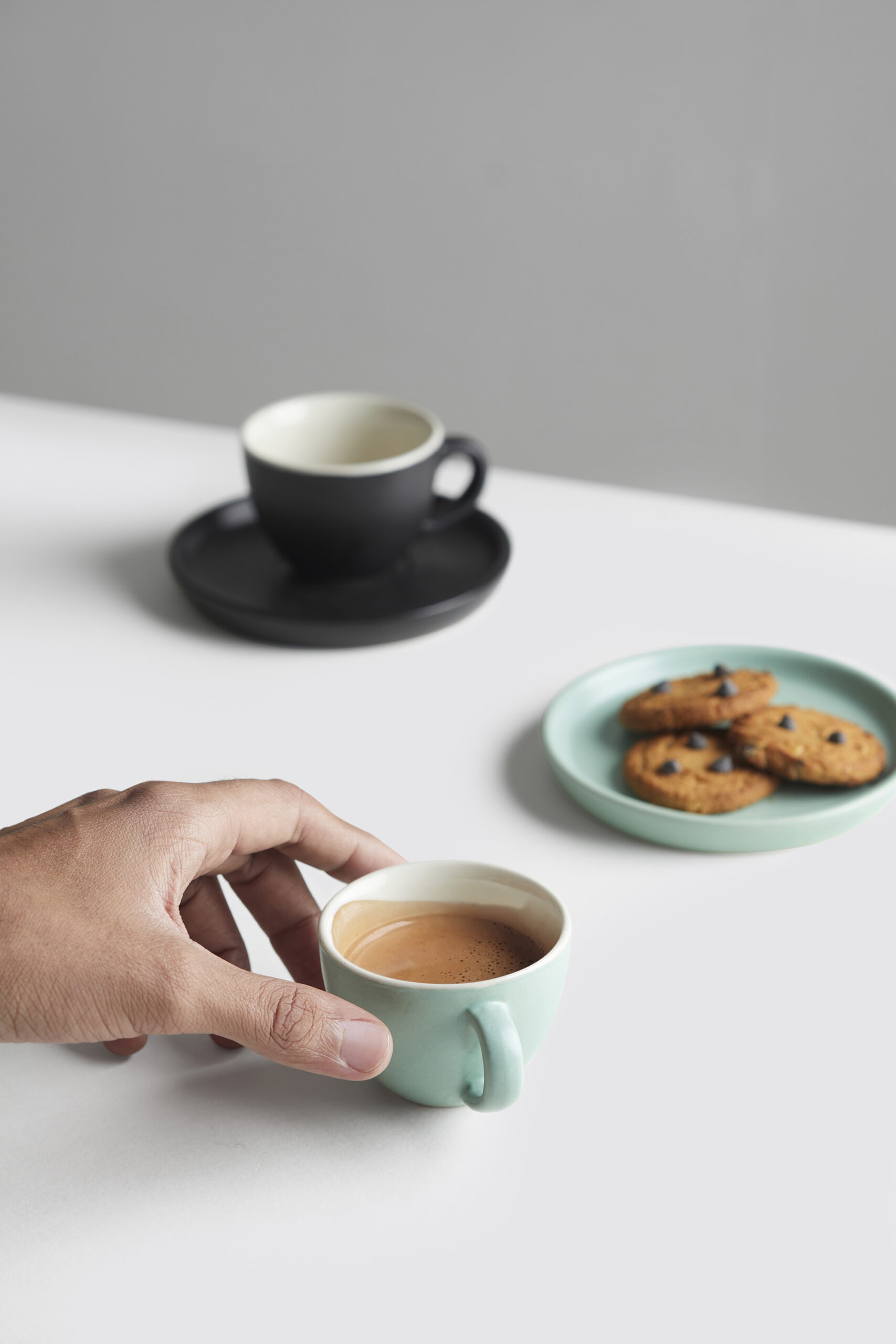
Using this information, Indus People makes thick-walled cups made out of fired ceramic stoneware which helps to keep the coffee hot for a longer time, while maintaining the weight and feel of the cup. They also design the base of their cups with a rounded interior, which makes for better pouring and blending, both actions that impart a fuller flavour to coffee.
Form must follow function – Indus People’s cups have ergonomic handles for a comfortable grip, and for the convenience of their cafe clients, the cups and saucers are stackable; the inner rim at the bottom of the saucer fits into the mouth of the cup below it.
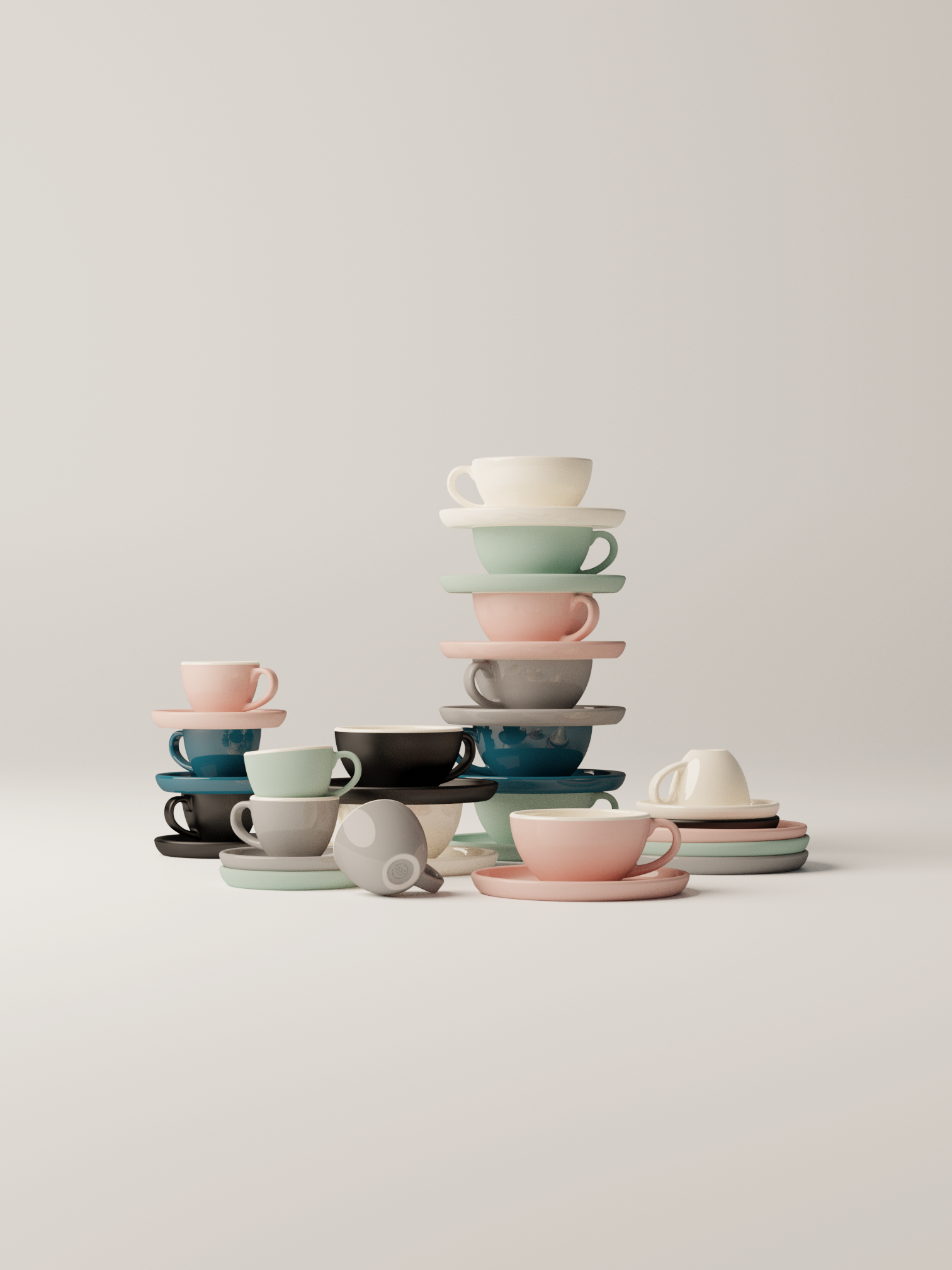
All their wares, single shot espresso cups to large mugs for lattes, come in colours inspired by Indian cities such as Gangtok Sage Matte, Bombay Blue Glossy, and more. In the pipeline is a a 360ml cup suitable for Americanos and more subdued colours.
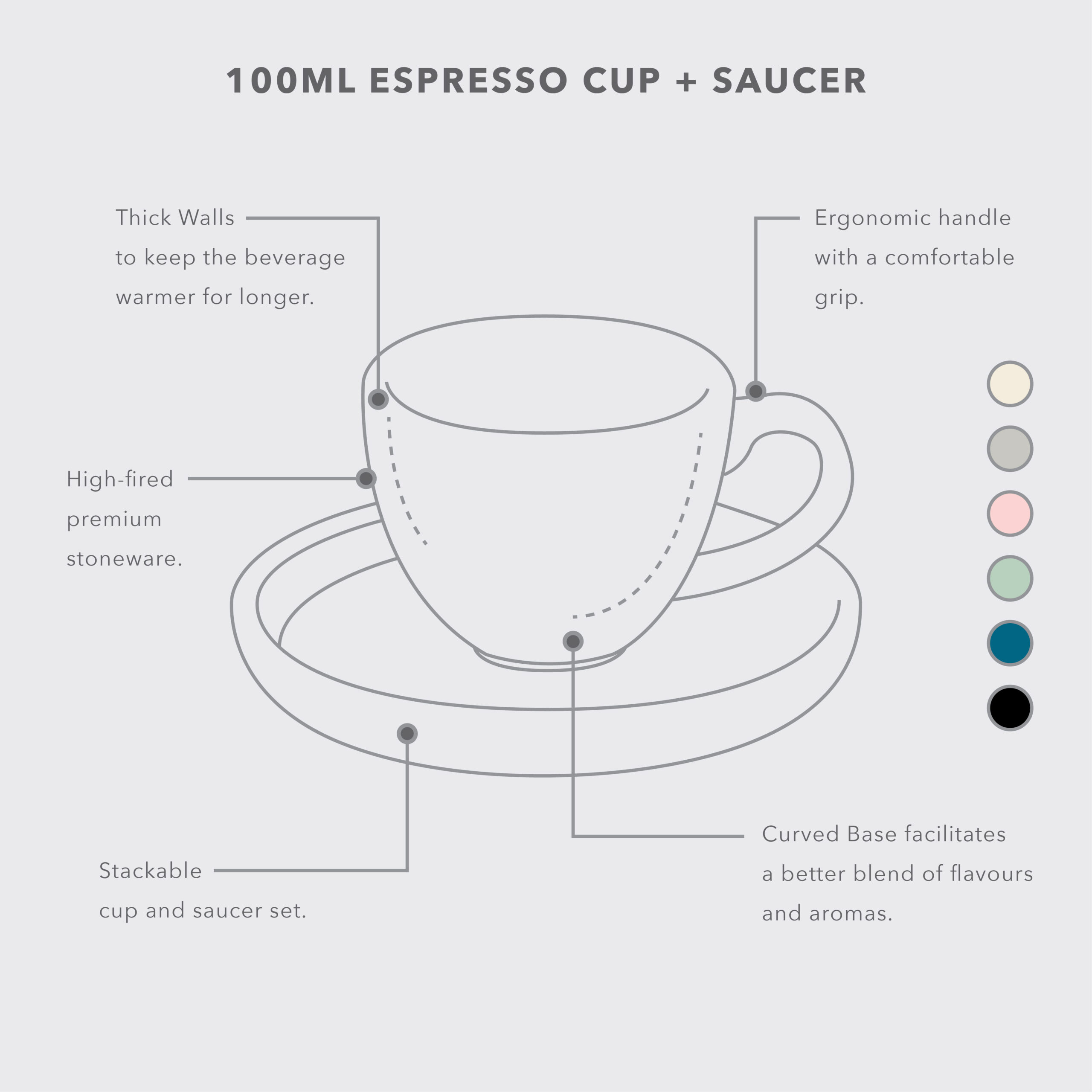
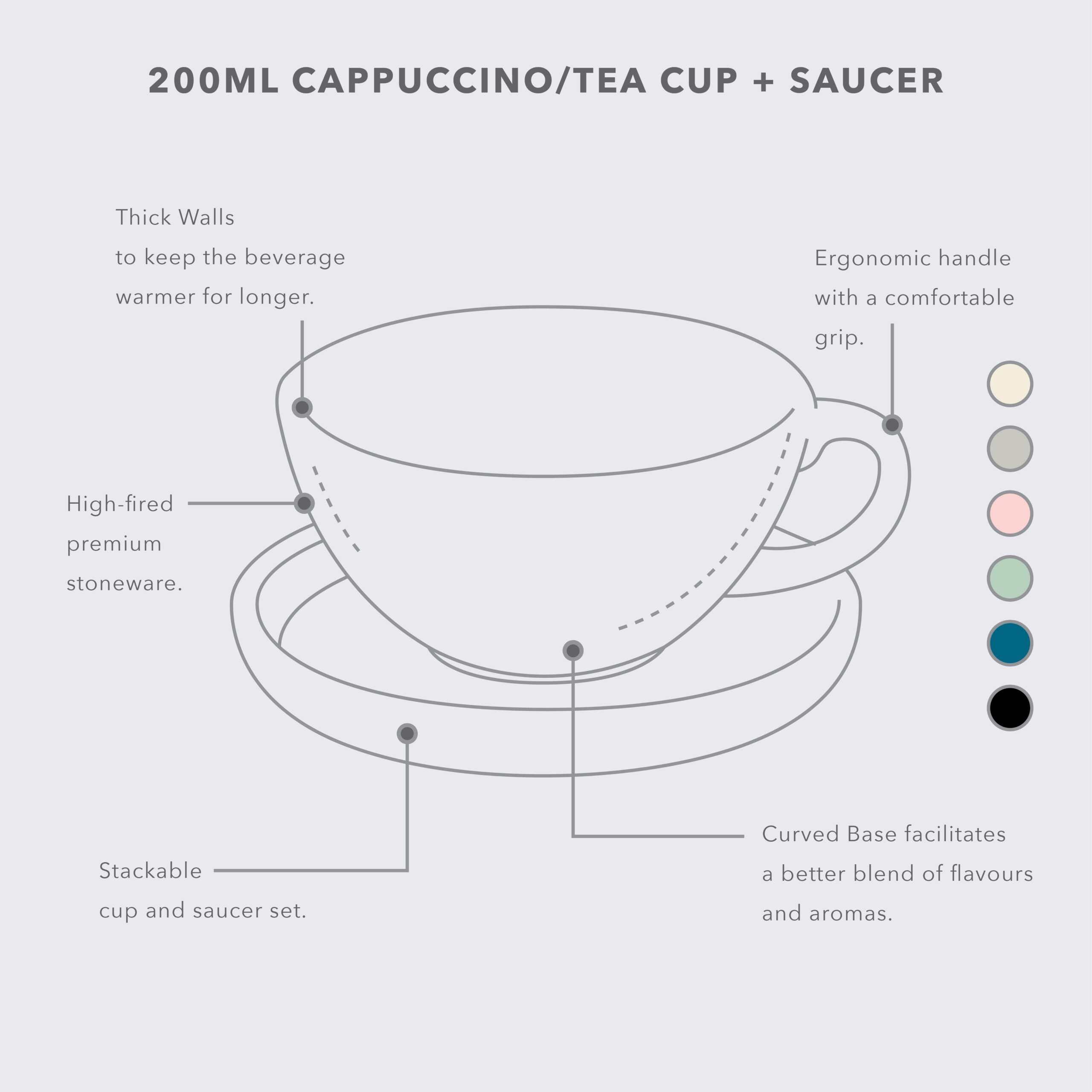
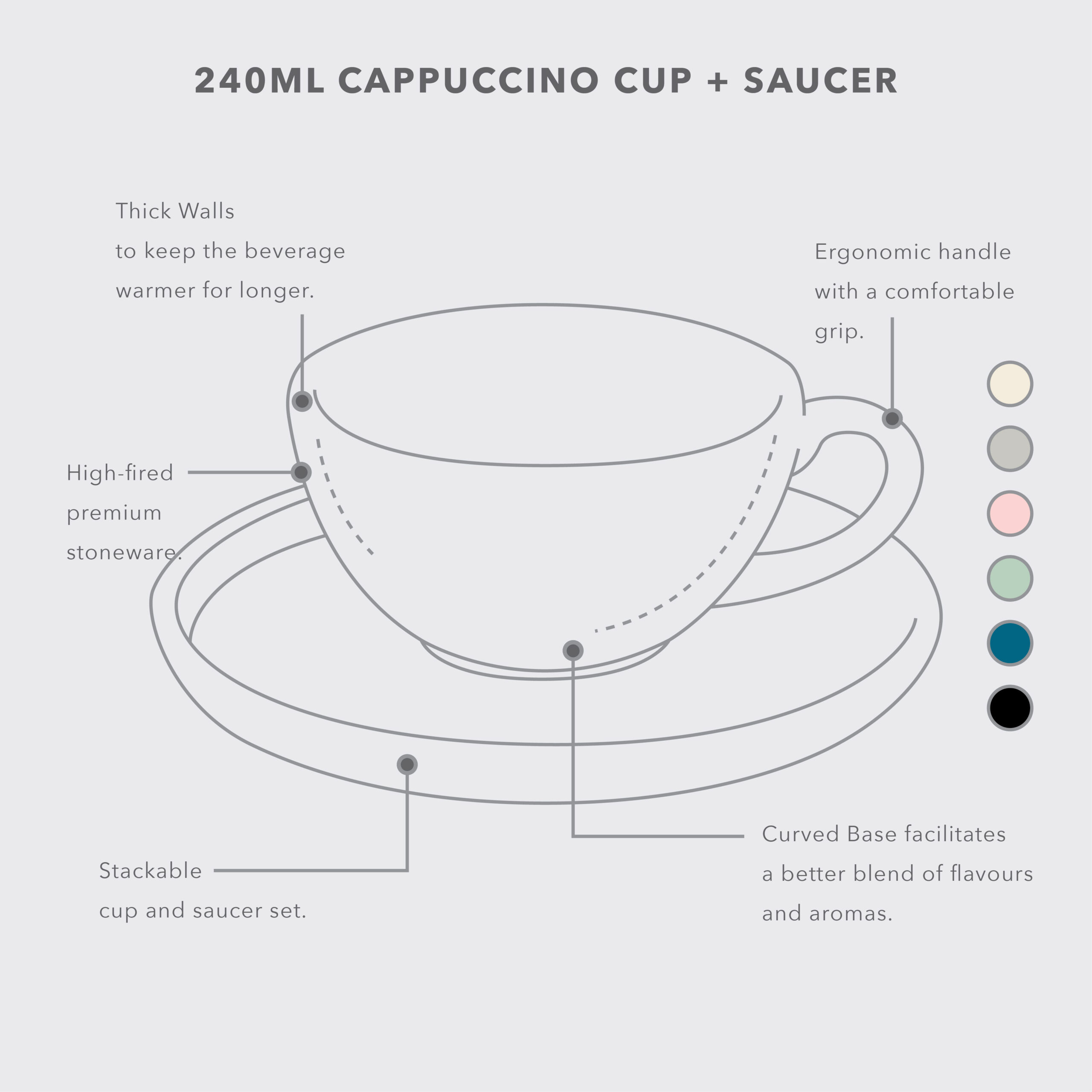
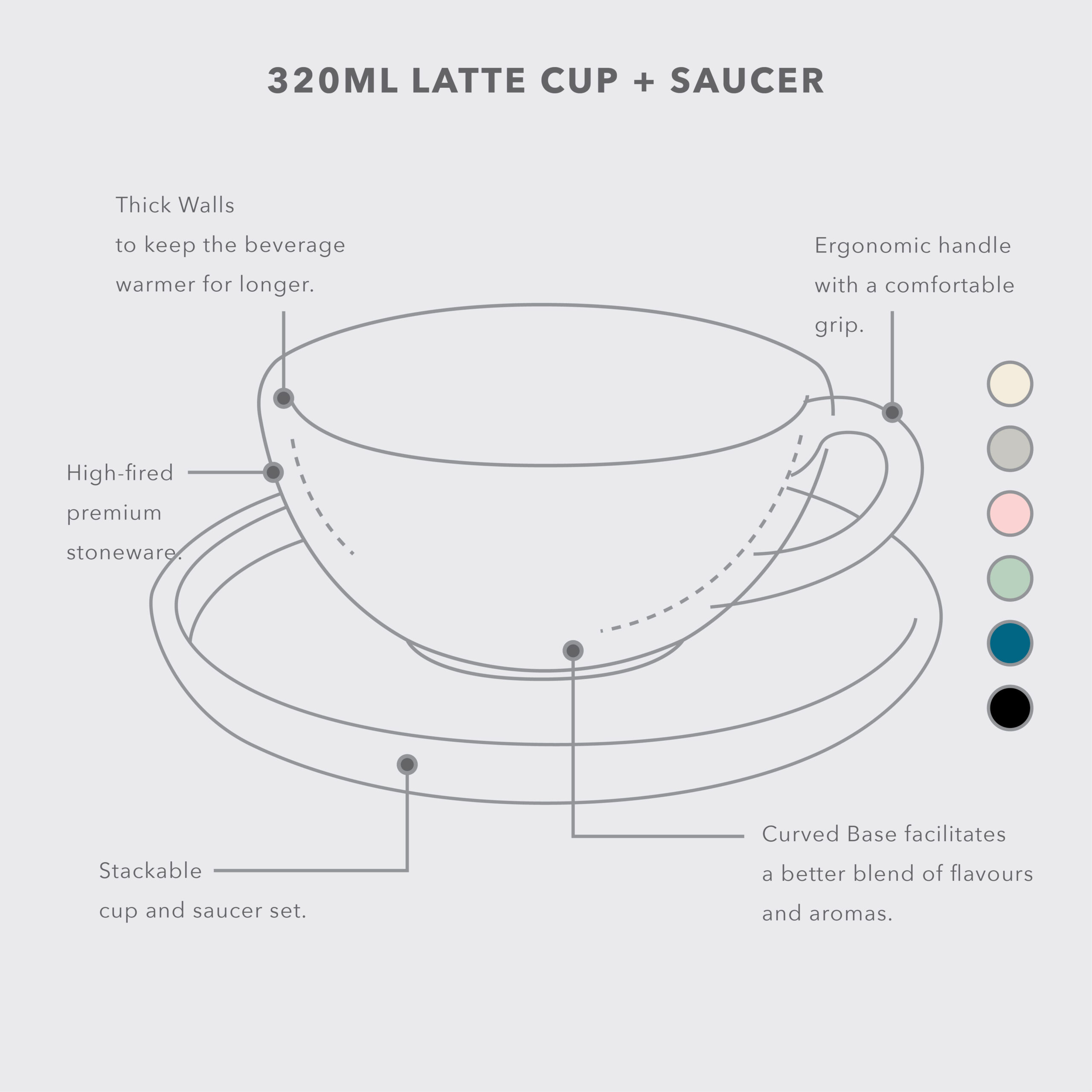
Diminishing the B2B and D2C gap
Even though we’re a coffee-loving country, there is a large gap in our B2B and D2C markets. Aditi remarks, “In the D2C space, there is a bigger focus on design and presentation, not so much on functionality.” Cups and mugs are generally purchased for drinking chai or coffee, so people tend to buy cups that are aesthetically pleasing – a colour, design, or illustration that appeals to them. Or they choose cups that can be used when hosting guests – a selection purely based on presentation. Hence, brands in D2C end up focusing on the design and presentation of cups.
Aditi feels that Indian brands don’t cater yet to the specific needs of the coffee trade in the B2B space. Cafes that had the resources to source cups from international brands purchased them from distributors. Others which settled for locally available cups couldn’t procure the MOQs (minimum order quantity) that Indian factories demanded. So they settled for cups that were most easily available based on quantity and design.
Indus People noticed this gap thanks to the many enquiries they were receiving for espresso, cappuccino, and latte cups. Now, nothing makes Aditi happier than stalking the large and small coffee houses that buy from Indus People. She enjoys watching customers use and post pictures of her brand’s products.
Shop for their cafe range and other gorgeous ceramic tableware here.

